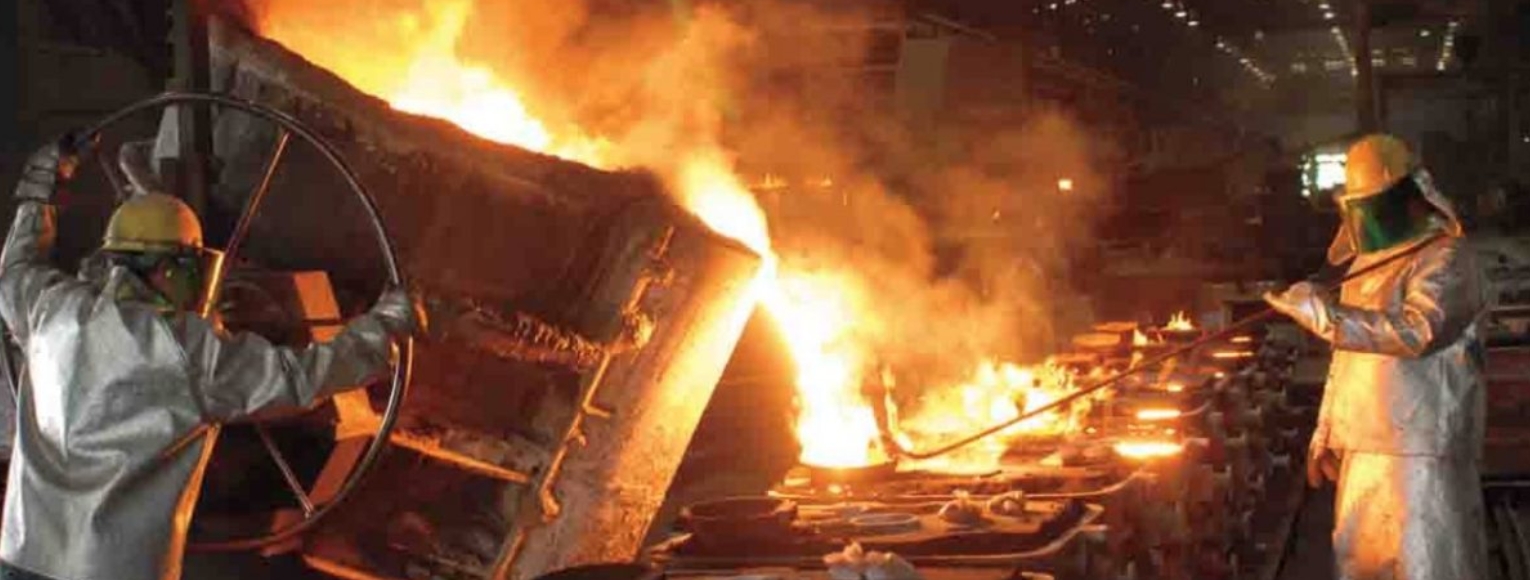
The steel casting process is a complex and intricate operation that requires precise control over numerous variables to ensure the production of high-quality components. The advent of advanced simulation software has revolutionized the steel casting industry by enabling manufacturers to optimize processes, reduce defects, and enhance overall efficiency. This article explores the critical role of simulation software in steel casting process optimization, highlighting its benefits, applications, and future potential.
Overview of Steel Casting Process
The steel casting process involves several stages, including:
- Raw Material Preparation: Selecting and preparing high-quality iron ore and alloys.
- Melting and Refining: Melting raw materials in furnaces and refining the molten steel.
- Mold Preparation: Creating precise molds using materials like sand or ceramics.
- Pouring and Casting: Pouring the molten steel into molds and allowing it to solidify.
- Cooling and Solidification: Managing the cooling process to ensure proper solidification.
- Finishing and Machining: Cleaning, machining, and inspecting the castings to meet specifications.
The Role of Simulation Software
Simulation software plays a pivotal role in optimizing each stage of the steel casting process. By providing a virtual environment to model and analyze various aspects of the process, simulation software helps manufacturers predict outcomes, identify potential issues, and implement improvements before actual production begins.
Benefits of Simulation Software in Steel Casting
- Process Optimization: Simulation software allows for the optimization of parameters such as temperature, cooling rates, and mold design, leading to improved casting quality and reduced defects.
- Cost Reduction: By identifying and addressing issues in the virtual environment, manufacturers can reduce the need for physical trials and errors, saving time and resources.
- Enhanced Quality: Predictive capabilities of simulation software enable the detection of potential defects such as porosity, inclusions, and cracks, ensuring higher quality castings.
- Increased Efficiency: Simulation software streamlines the entire casting process, from design to production, enhancing overall efficiency and productivity.
Applications of Simulation Software in Steel Casting
- Mold Design and Optimization: Simulation software helps design molds that ensure uniform cooling and solidification, reducing the likelihood of defects.
- Thermal Analysis: By simulating the thermal behavior of the casting process, manufacturers can optimize cooling rates and thermal gradients to prevent thermal stresses and distortions.
- Flow Simulation: Simulation software models the flow of molten steel within the mold, helping to avoid issues like turbulence, air entrapment, and incomplete filling.
- Solidification Modeling: Predicting the solidification pattern allows for the identification and mitigation of issues such as shrinkage porosity and segregation.
Tables Illustrating Simulation Software Applications
Table 1: Key Applications of Simulation Software in Steel Casting
| Application | Description | Benefits |
|---|---|---|
| Mold Design Optimization | Designing molds for uniform cooling and solidification | Reduced defects, improved casting quality |
| Thermal Analysis | Simulating thermal behavior to optimize cooling rates | Prevention of thermal stresses and distortions |
| Flow Simulation | Modeling molten steel flow to avoid turbulence and air entrapment | Improved filling, reduced inclusions |
| Solidification Modeling | Predicting solidification patterns to prevent porosity and segregation | Enhanced casting integrity and performance |
Lists of Simulation Software Benefits and Features
Benefits of Using Simulation Software
- Improved Casting Quality: Enhanced predictive capabilities lead to higher quality castings with fewer defects.
- Cost Savings: Reduced need for physical prototyping and trial-and-error methods lower production costs.
- Time Efficiency: Accelerated process development and optimization reduce lead times.
- Risk Mitigation: Early identification of potential issues minimizes the risk of costly failures during production.
- Informed Decision-Making: Data-driven insights enable better decision-making and process control.
Key Features of Simulation Software
- 3D Modeling: Create detailed three-dimensional models of the casting process.
- Thermal Analysis: Simulate temperature distribution and cooling rates.
- Flow Dynamics: Analyze the flow behavior of molten steel within molds.
- Defect Prediction: Identify and predict common casting defects.
- Material Properties Database: Access extensive databases of material properties for accurate simulations.
- User-Friendly Interface: Intuitive interfaces for easy navigation and operation.
Future Potential of Simulation Software in Steel Casting
The future of simulation software in steel casting process optimization is promising, with ongoing advancements in technology and computational power. Potential future developments include:
- Artificial Intelligence (AI) Integration: Leveraging AI and machine learning algorithms to enhance predictive capabilities and process optimization.
- Real-Time Simulation: Developing real-time simulation tools that provide immediate feedback during the casting process, enabling on-the-fly adjustments.
- Advanced Material Models: Incorporating more sophisticated material models that account for complex behaviors and interactions.
- Cloud-Based Solutions: Utilizing cloud computing to handle large-scale simulations and data analysis, improving accessibility and collaboration.
- Enhanced User Interfaces: Developing more intuitive and interactive user interfaces to simplify the simulation process and broaden its adoption.
Conclusion
Simulation software has become an indispensable tool in the steel casting process, offering significant benefits in terms of process optimization, cost reduction, quality enhancement, and efficiency. By modeling and analyzing various aspects of the casting process in a virtual environment, manufacturers can make informed decisions, predict outcomes, and implement improvements with confidence. As technology continues to advance, the potential for simulation software to further revolutionize the steel casting industry is immense, paving the way for even greater precision, reliability, and performance in steel castings.
